Planting for butterflies
Attracting pollinators to planting schemes
In recent years, there has been a welcome increase in awareness around pollinator-friendly planting. Many landscape designs now include plants that support bees, particularly in response to their well-documented decline. However, as bees are one of our most predominant pollinating species, focussing so heavily on their needs means that other important pollinators such as butterflies can often be overlooked. Whilst bees are efficient pollinators for many crops and flowering plants, butterflies also play a vital role in pollination, especially for wildflowers and native species that help sustain healthy ecosystems.
Butterflies are more than just ornamental visitors to green spaces. They are part of a wider network of beneficial insects that help maintain ecological balance. Their presence in a planting scheme supports biodiversity and can be an indicator of good environmental quality. Sadly though, butterfly-friendly plants are not always prioritised in commercial or amenity planting schemes, which often favour species suited primarily to bees.
By including plants that support both groups, we can create more biodiverse and resilient environments. Thoughtful plant species selection not only benefits butterflies but also improves the overall structure and seasonal interest of a planting scheme.
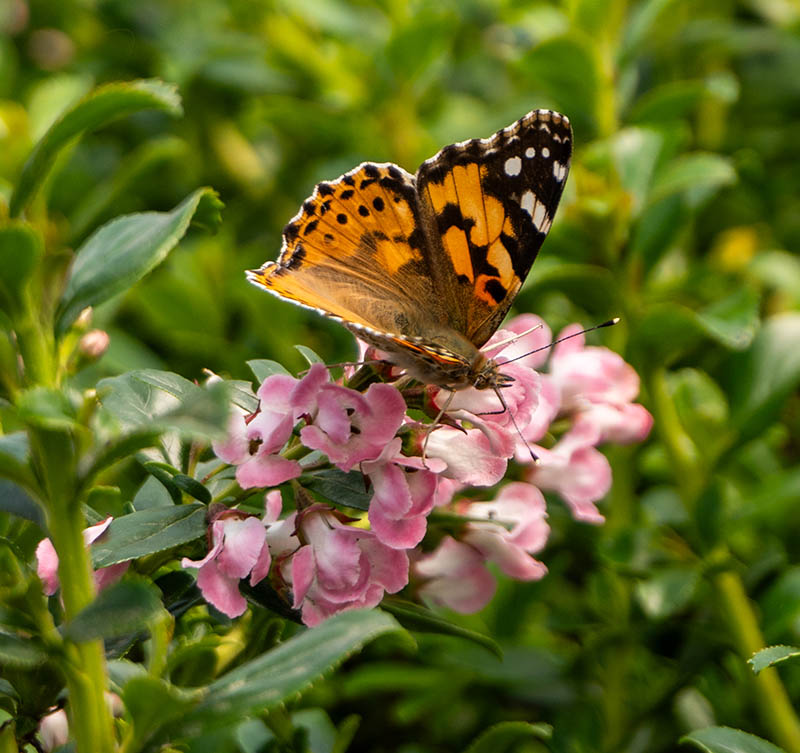
Painted lady (Vanessa cardui) on Escallonia ‘Apple Blossom’ flower
What makes plants butterfly-friendly?
The first step in creating spaces for butterflies within planting schemes is understanding their particular requirements when it comes to plants. Firstly, butterflies are drawn to plants that provide a reliable and accessible nectar source. They require flowers with an open or tubular shape that allows them to reach the nectar using their long proboscis. Plants that produce nectar-rich blooms over a long season are particularly valuable, as they offer food throughout the butterflies’ active months, from early spring through to late autumn.
Secondly, the colour of flowers also plays a pivotal role in attracting butterflies into green spaces. They are especially responsive to bright colours such as purple, pink, yellow, and white. These colours help butterflies locate flowers from a distance. Many butterflies are also attracted by light scent, particularly in warm, sunny conditions.
Additionally, butterflies are cold-blooded, and rely on external heat to stay active, so they favour sunny, sheltered spots where they can feed and rest. Plants that thrive in full sun will usually be better suited to attracting butterflies. In addition, the presence of shrubs, grasses, or taller perennials can provide resting spots and shelter from the wind.

As well as nectar plants that support adult butterflies, it is also important to consider larval host plants, which allow butterflies to complete their full life cycle. These are specific plants that caterpillars feed on after hatching. Including suitable host plants can help support breeding populations and can enhance the long-term ecological value of a scheme. For example, Urtica dioica (common nettle) is essential for the caterpillars of species such as the Peacock and Small Tortoiseshell, while Lotus corniculatus (bird’s-foot trefoil) supports Common Blue and Dingy Skipper butterflies. Where appropriate, these plants can be incorporated into wildflower meadows, wildlife corridors, and other natural areas within larger planting schemes.
Plants for attracting butterflies
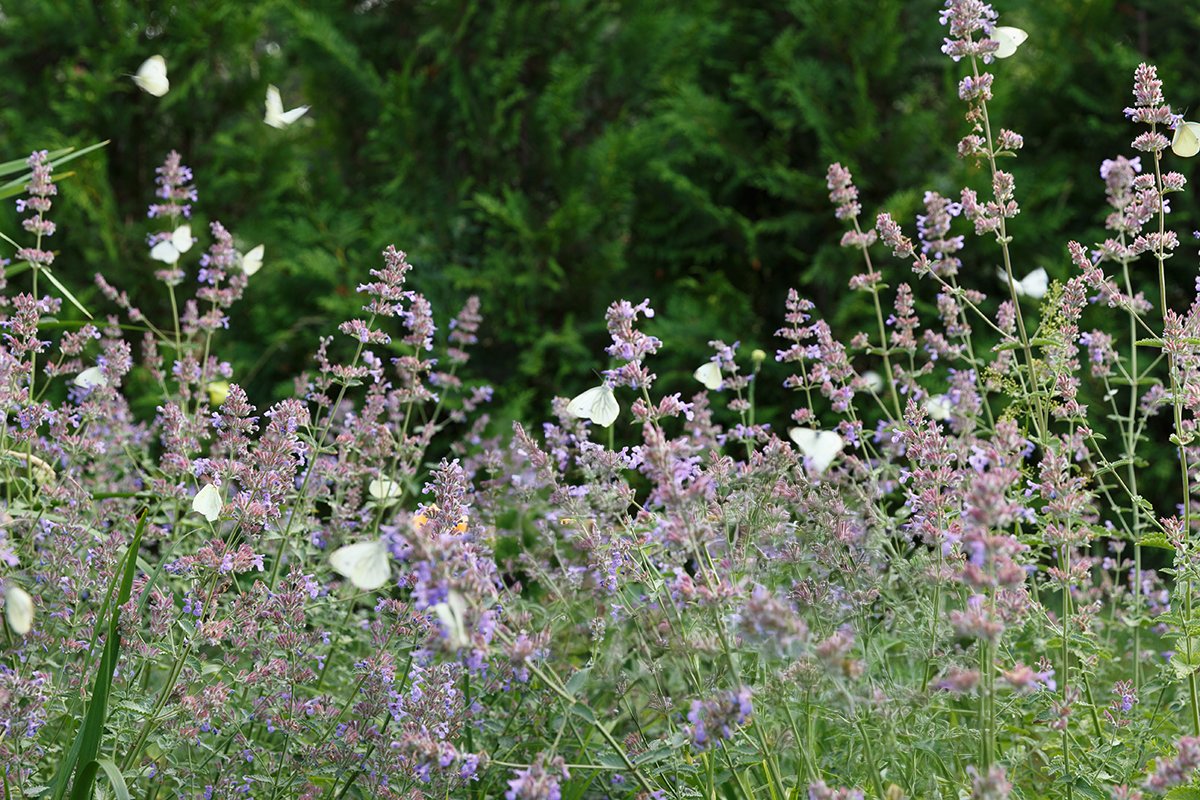
Nepeta ‘Six Hills Giant’

Salvia nemorosa ‘Caradonna’
Nepeta ‘Six Hills Giant’
A robust, clump-forming perennial with grey-green aromatic foliage and upright spikes of violet-blue flowers. Long flowering period from early summer to early autumn. Highly attractive to butterflies and bees. Drought-tolerant once established, and suitable for full sun and well-drained soils. Ideal for groundcover in borders and informal planting schemes. Low maintenance, but benefits from occasional deadheading to prolong flowering.
Salvia nemorosa ‘Caradonna’
A compact, upright perennial with deep purple flower spikes held on striking dark stems. Flowers from late spring into early autumn, offering long seasonal interest. Rich in nectar and highly attractive to butterflies and bees. Prefers full sun and well-drained soil, and drought-tolerant once established. Works well in borders, pollinator schemes, and low-maintenance planting. Regular deadheading encourages repeat flowering.
Mahonia × media ‘Charity’
An upright, evergreen shrub with bold, spiny foliage and tall yellow flower spikes from late autumn into winter. Provides valuable nectar when few other plants are in flower. Supports late and overwintering pollinators, including butterflies in mild spells. Grows well in partial shade and tolerates a range of soils. Ideal for structural interest in mixed shrub borders or wildlife planting schemes. Low maintenance once established.
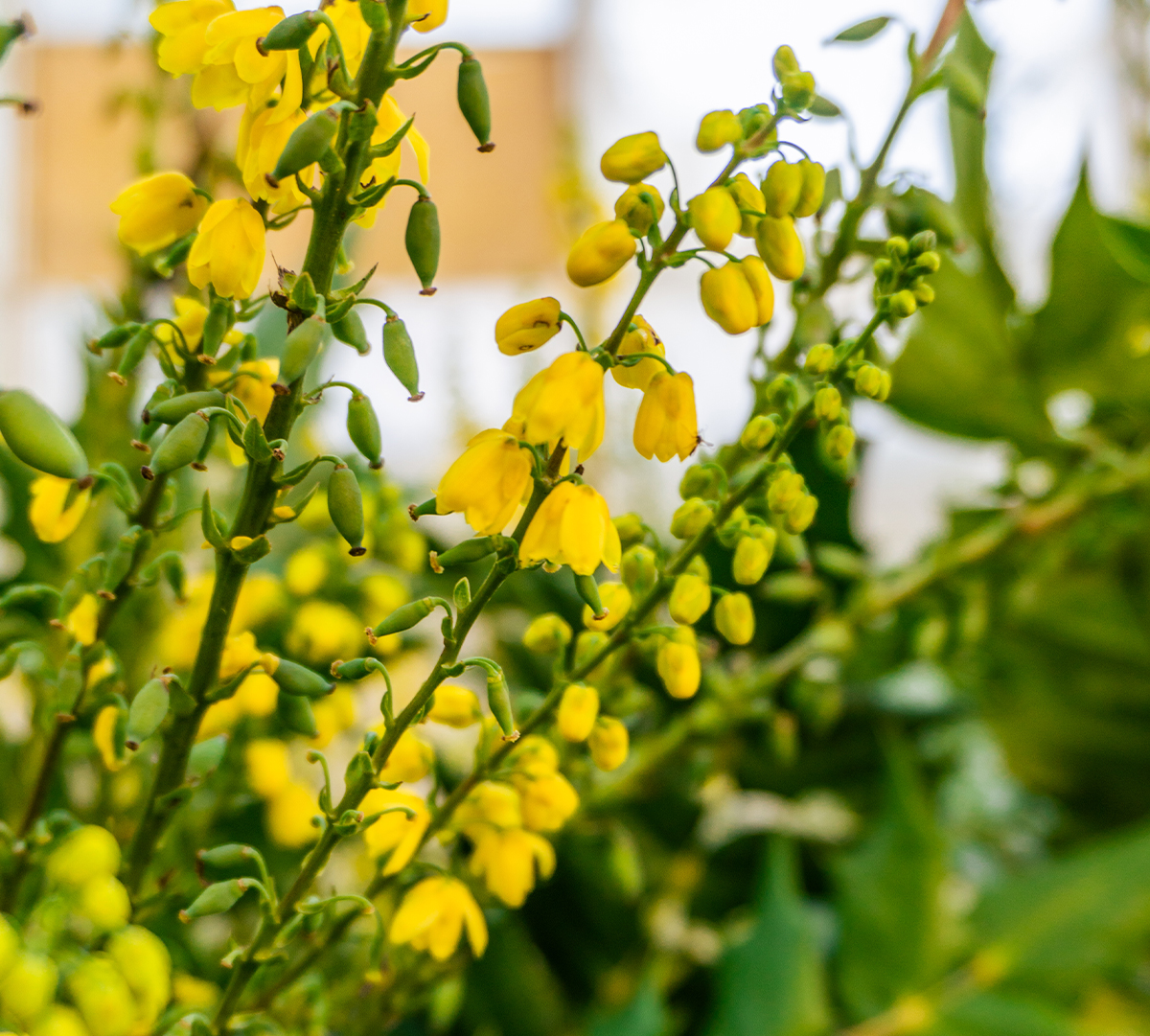
Mahonia × media ‘Charity’
Digitalis purpurea
A tall, biennial or short-lived perennial with spires of tubular purple-pink flowers, blooming in early to mid-summer. Provides rich nectar for long-tongued pollinators, including butterflies. Prefers partial shade and moist, well-drained soil but tolerates a range of conditions. Self-seeds readily, making it suitable for wildlife borders, meadows, and shaded margins.
Heuchera ‘Palace Purple’
A compact perennial with deep purple foliage and delicate white to pale pink flower spikes from late spring to early summer. Flowers offer a light nectar source that attracts butterflies and other small pollinators. Performs best in partial shade with well-drained soil and adds foliage interest throughout the year. Suitable for borders, wildlife gardens, and shaded planting schemes. Low maintenance and tolerant of a range of conditions.
Hosta fortunei var. aureomarginata
A clump-forming perennial with broad green leaves edged in yellow and pale lilac, bell-shaped flowers in mid to late summer. The flowers produce nectar that attracts butterflies, particularly in shaded or woodland-style planting. Thrives in moist, fertile soil with partial to full shade. Ideal for underplanting, mixed borders, or naturalistic shade schemes. Low maintenance once established and adds strong foliage contrast.
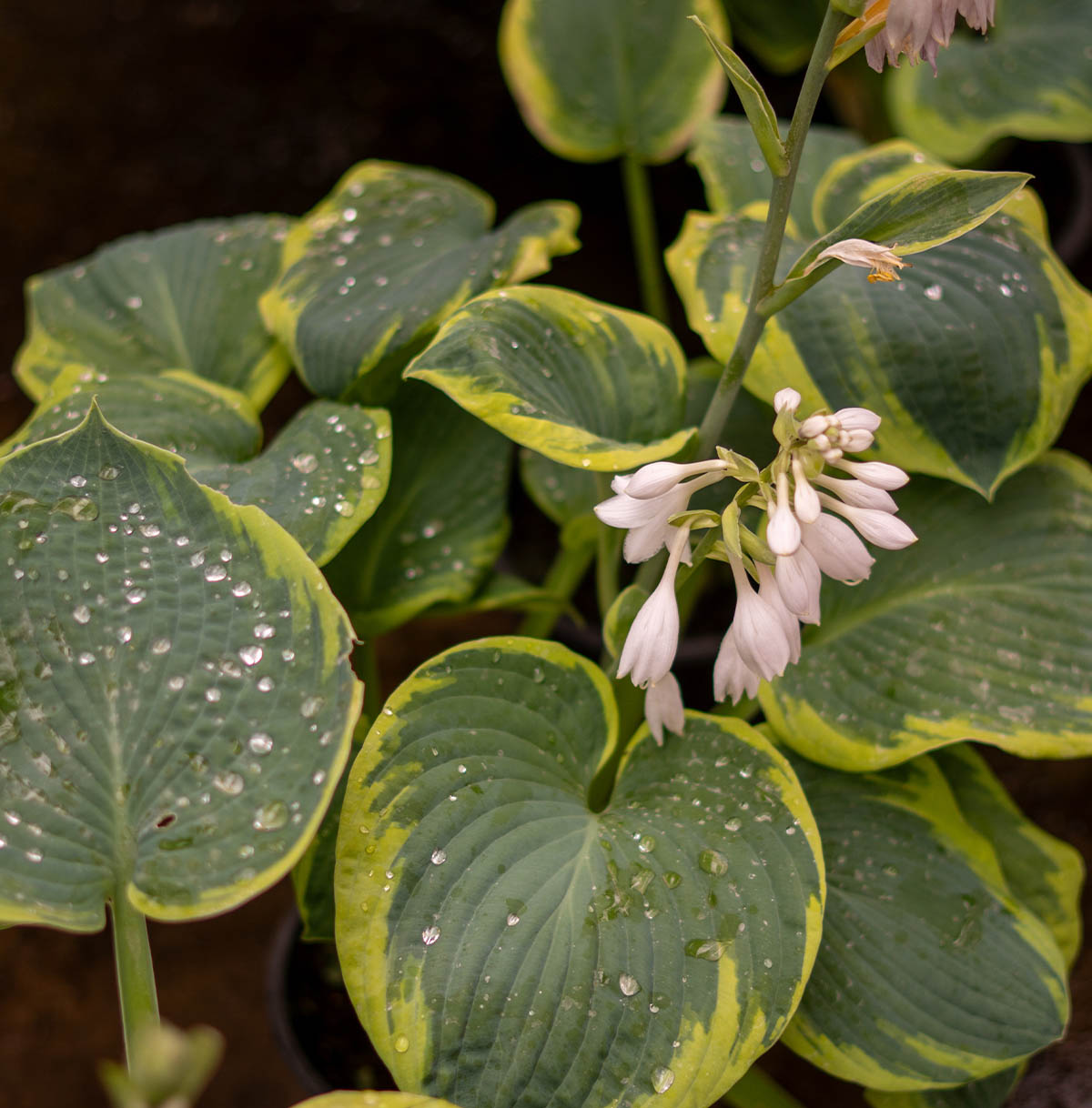
Hosta fortunei var. aureomarginata
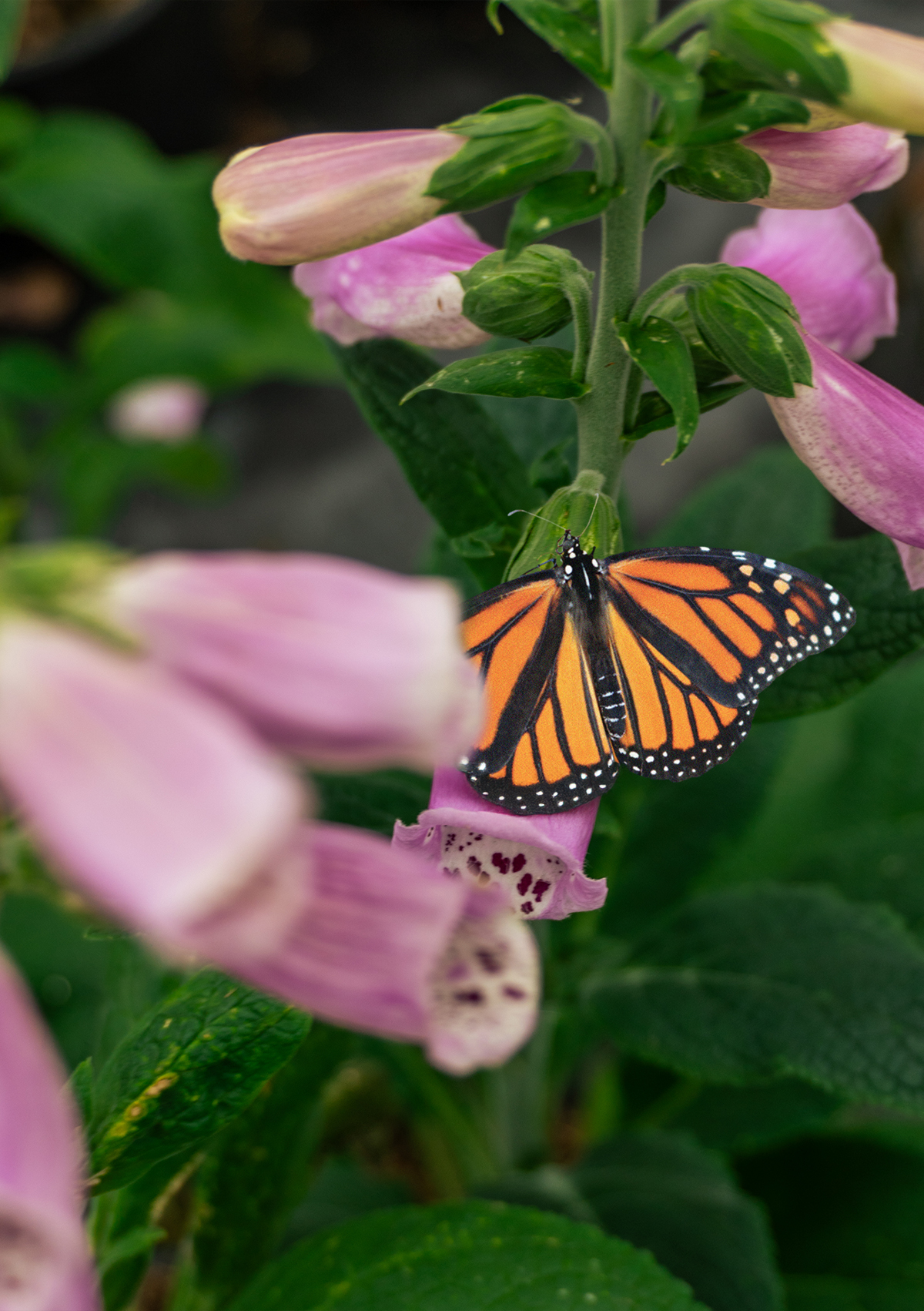
Digitalis purpurea
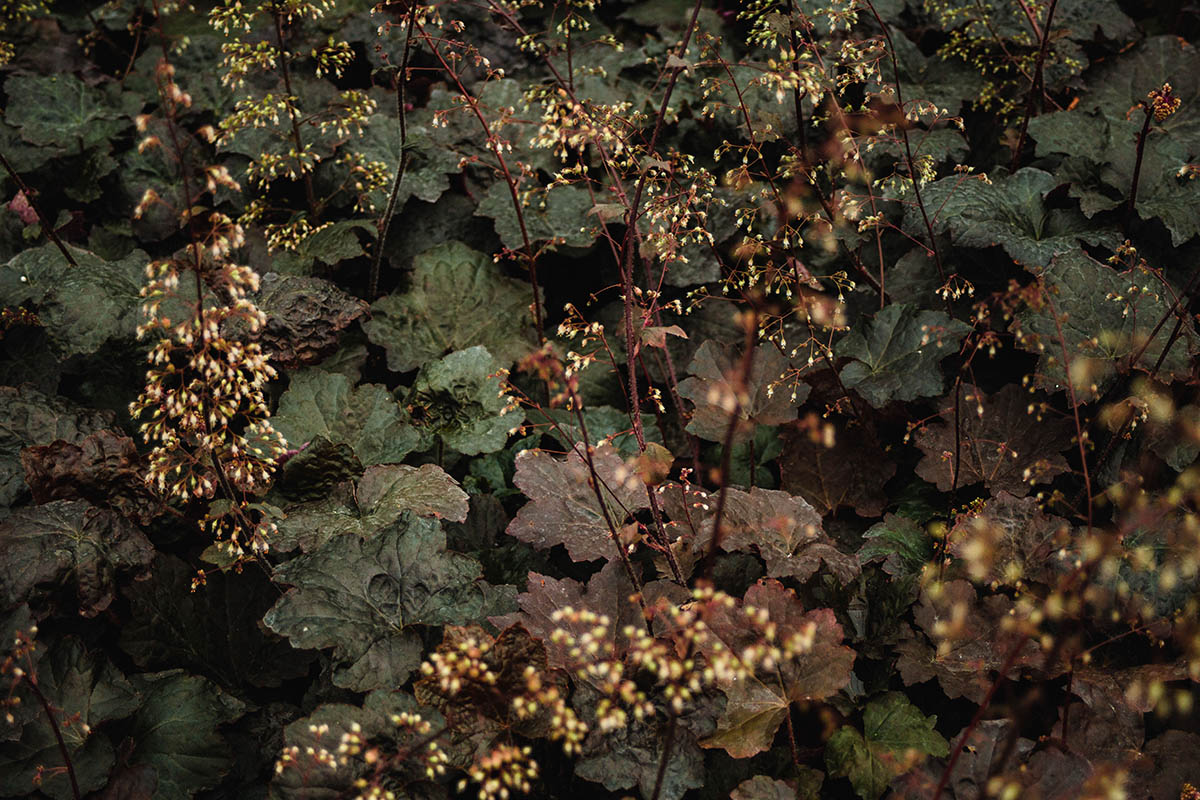
Heuchera ‘Palace Purple’
Additional planting tips
When designing a planting scheme for butterflies, it’s important to think about planting layout, seasonal coverage, and site conditions. Grouping the same species together in clusters makes it easier for butterflies to locate nectar sources. Large, well-placed patches are more visible and accessible than scattered individual plants. This also makes maintenance more straightforward and keeps the planting looking cohesive.
To maximise appeal, it is best to select plants that flower at different times of the year. Early-flowering species can support butterflies emerging in spring, while late-flowering plants such as Mahonia can help those still active in autumn and winter. A carefully chosen combination of species will ensure that nectar is available throughout the season.
Sun exposure is another key consideration. Most butterflies are active in warm, sunny weather, so the best planting locations are those that receive full sun for most of the day. Sheltered positions out of strong wind will also help butterflies conserve energy while feeding. This can be achieved naturally through planting design by using taller shrubs or grasses as windbreaks.
It is also important to avoid the use of chemical pesticides, including insecticides and herbicides, which can harm butterflies directly or reduce their food sources. Even organic treatments should be used cautiously. Creating a balanced planting mix that encourages natural pest predators is a more sustainable approach.
Finally, adding features such as flat stones or low walls within the planting scheme can offer butterflies a place to bask and warm their wings. This is particularly helpful in the early morning or in cooler conditions, and it helps keep butterflies active and feeding for longer during the day.
Butterflies are a valuable part of the ecosystem. Supporting them through considered plant selection helps improve biodiversity, strengthens habitats, and brings life and colour to planting schemes. By choosing plants that offer long-lasting, accessible nectar and by designing with sun, shelter, and continuity in mind, our green spaces can play a pivotal role in supporting butterfly populations.
At Greenwood, we believe that functional, wildlife-friendly planting can also be visually appealing and adaptable to a wide range of project types. Including even a few butterfly-friendly species can make a lasting impact on the health and resilience of outdoor spaces.
To learn more about planting for biodiversity, you can read our blog about selecting the best native hedges here.

